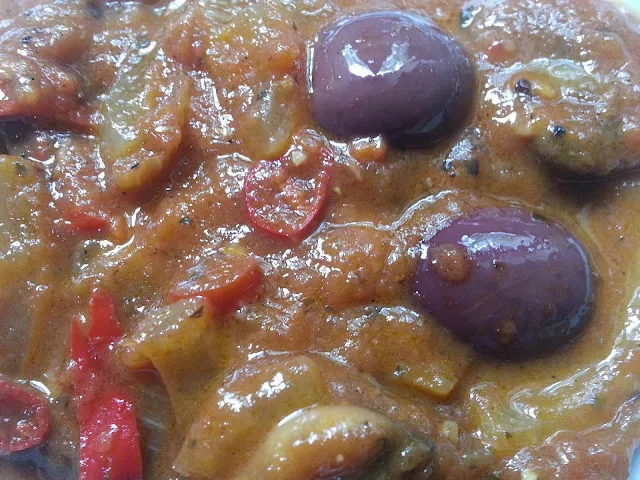Home-made Tomato Paste for Pizza or Pasta
 |
| The best home-baked pizzas use home-made tomato paste |
The secret to making your own pizzas lies not just in the dough, but also in the quality of the tomato paste. Yes, it's a bit of time and effort, but it make a big difference to the overall taste of the product. I make a huge batch and then freeze into smaller portions. It defrosts really well. The quantities given here mean that, if you only cater for your family, you should have enough for about three months' worth of pizzas. However, if you are prone to inviting others around for pizza parties, it may not last so well.
The first thing you must worry about are the fresh tomatoes:
 |
| Tomatoes ripening - to be used in pizza paste/sauce |
Remember, Italian food is about taking time. Slow food is not just about eating slowly and enjoying your meal, but also about allowing things to take their time, such as waiting for the tomatoes to ripen outside the fridge. I certainly feel very warm and smug looking at the large basket of tomatoes ripening away – even over-ripe is great for this paste. It is no surprise that the Slow Food Revolution: A New Culture for Eating and Living was initiated in, and has its spiritual base in Italy.
The tomatoes I advocate are jam or paste tomatoes. They are sweeter than the ordinary variety. However, any kind of tomato will do.
Pizza Tomato Paste Recipe
8 kgs of jam tomatoes (18 lbs)
8 onions
8 Tablespoons balsamic vinegar - or more
2 Tablespoons sea salt
4 Tablespoons sugar
Optional: 1/2 bottle red wine, for added depth and flavour, but not essential in the slightest. Also, the addition of this will make your cooking time a little longer.
If the above, industrial quantities are a bit much for you, then the ratios are as follows:
For every two pounds or one kilogram of tomatoes,
I use one medium onion
and about a quarter to a third of a bulb of garlic.
Garlic, again, is one of those aspects left to taste, as are the additions of red wine, sugar, salt and balsamic vinegar. And part of making the taste wonderfully complex and full of depth is: time. Yet again, low heat, long cooking brings out the best flavours.
Heat onions in an oil that is not olive oil – it goes bitter. I mostly use grapeseed oil, with a bit of butter added for taste. Just make sure the onions are lightly coated. The longer you can caramelise the onions, the better, but make sure they don’t burn. If they do catch a bit, then add some red wine or balsamic vinegar to the pan to deglaze. Once well caramelised, or at least translucent, add the finely chopped garlic to brown. I then usually use the hand blender, which you can hold in the pan itself to chop the onions very fine (I have chopped them in a liquidiser previous to putting in the pan, but they tend to go a sickly green colour – does not affect the final taste, but between the amount of extra effort involved and the tears that run copiously down your face, it is best avoided).
The tomatoes require an industrial approach:
 |
| Industrial process at work to make tomato paste |
 |
| Tomatoes are skinned, then the tomato mixture is placed into pots |
 |
| Tomato paste: start of reduction process |
 |
| Pizza tomato paste simmering away and reducing gradually |
 |
| Note how much darker the tomato paste is, and how much it has reduced |
 |
| Home-made tomato paste used as a base for pasta sauce with olives, anchovies, mushrooms and chillies |



Comments
Post a Comment